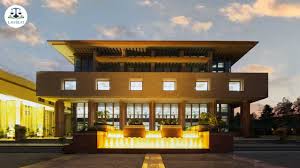Delhi HC Dismisses Plea Against Rajouri Apartment Complex, Takes Stern View On Invocation of Art. 226 For Private Purposes

While acknowledging that Article 226 of the Indian Constitution is a public law remedy, the bench observed that the powers vested under this article need to be used sparingly
A bench of the Delhi High Court presided over by Justice Purushaindra Kumar Kaurav, on August 16 2024, dismissed a writ petition, filed by the Residents’ Welfare Association (RWA) of Block-12 Subhash Nagar, observing that “if frivolous petitions are readily entertained, then the Constitutional Courts would be committing a breach of trust against the genuine and bonafide litigants who have reposed faith in the constitutional machinery and have been longing since ages in the hope of justice.”
The petitioner had alleged that the residents of the respondent party, No-5 Rajouri Apartments, had wrongfully and illegally constructed a boundary wall opposite their residences, which they claimed was an encroachment of government land, further stating that the boundary wall was causing a public nuisance by blocking the passage for the members of their association to approach public amenities such as parks and recreation centers, such as Priyadarshini Park.
Accordingly, they filed a writ petition in the High Court under Article 226 of the Indian Constitution, against the respondents, South Delhi Municipal Corporation, Delhi Development Authority, Rajouri Apartments and the Special Task Force.
The dispute between the parties has been ongoing. In January 2022, the Delhi High Court had taken cognizance of the dispute, noting that it pertained to the date on which the wall had been constructed, and had accordingly directed one of the respondents- the DDA(Delhi Development Authority) to verify whether the boundary wall was located within the land that had been allocated to the No-5 Rajouri Apartment complex.
In an order passed in July 2023, the Court noted that, while individual flats had been allocated to residents of the Rajouri Apartments Society, the entire colony itself lacked a layout plan; later in September of the same year the DDA claimed that the layout plan at the time of allotment did not include a boundary wall.
The court in the August 16, 2024 hearing of this case, noted that the case dates back to 1984, when the construction took place, as claimed by the DDA.
In light of these previous hearings and after listening to the arguments presented by the counsels for the petitioner and respondents, the high court observed that the case revolved around the dispute over the date of construction of the wall.
While the petitioner (RWA) claimed that the boundary wall had been constructed by the residents of the Rajouri Apartments Society after the land had been allotted to them, the respondents claimed that it had existed since the society’s inception.
However, the Court dismissed the petition and did not take favourably to it. While acknowledging that Article 226 of the Indian Constitution is a public law remedy, the bench observed that the powers vested under this article need to be used sparingly. The Article should be invoked only to proliferate the bonafide aims of the Constitution and not to settle private disputes.
The Court cited the case of Life Insurance Company of India v. Escorts Ltd. and Others, to emphasize their point. Similarly, the Court noted that, while the high court can ensure that no government land is encroached upon and has the authority to prevent unauthorized constructions, which should be dealt with sternly, given that such cases not only misuse government land but also curtail the freedom of citizens to enjoy public facilities, a violation of the statutory rules or regulations by the authority against whom the writ is to be issued needs to be established by the petitioner.
The court further cited the case of Rajendra Motwani v. MCD, where it was held that mere illegal construction per se does not give individuals the liberty to invoke Article 226 unless there has been a violation of their legal rights.
In this case, the court held that the disputed wall has been in existence for more than 30 years, and in the absence of any authentic documents to corroborate the date of its construction, no party can assert their claim.
Due to this lack of evidence, and the fact that the wall has existed at least since the year 2000, as it was repaired in 2012, the Court dismissed the petition, sternly observing that, while the facts of the case are debatable, the Constitutional Courts engaging in conducting enquiries into such contentious facts is not amenable with Article 226, setting an interesting precedent.
